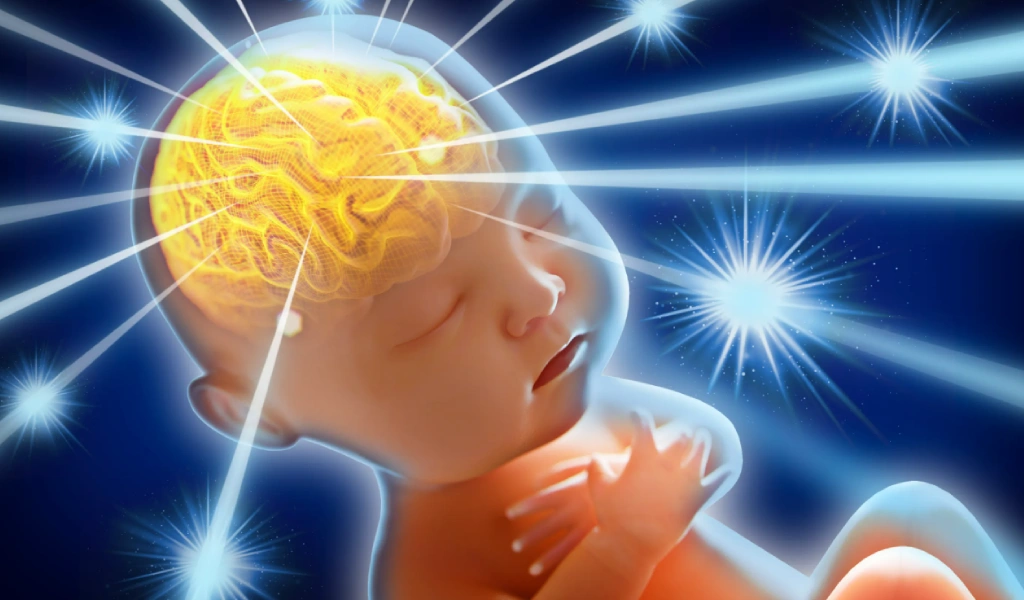Although the idea of Designer Babies is groundbreaking, at the same time it is also contentious.
Fictional books, popular culture, and science fiction films have all explored stories about modified individuals i.e. Designer Babies in imaginative worlds. This idea has translated to the realm of childbirth through the idea of designer babies.
These babies’ genetic composition is changed to eliminate defective genes before birth and provide resistance to specific harmful illnesses. As a result, designer babies are expected to be healthier than others of their generation.

If you are interested in learning more about designer babies, including their advantages, disadvantages, and ethical implications, please continue reading. The article on ‘What Are Designer Babies?’ also looks at several instances in which a designer baby was brought into existence.
What Is A Designer Baby?
A designer baby is a term used to describe a child who has been genetically modified before birth to possess specific traits or characteristics desired by the parents.1
Advances in genetic engineering and assisted reproductive technologies have enabled the screening of embryos for genetic disorders2 before they are implanted during in vitro fertilization.
Through pre-implantation genetic diagnosis, medical professionals can detect embryos that may carry the faulty gene. Modification of the defective gene can lead to the creation of a genetically engineered baby called a designer baby. These babies are often referred to as designer babies as they have been purposely altered through genetic manipulation.

The concept of a designer baby may seem unrealistic to you. However, it has been put into practice.
Has the first designer baby in the world already been born?
Indeed, there have been several controversial instances related to the conception of designer babies.
- Born in August 2000 in the United States, Adam Nash is recognized as the world’s first designer baby. His parents opted for IVF and PGD techniques to guarantee that the embryo did not carry the Fanconi Anemia gene.3 Adam Nash eventually provided stem cells to his older sister Molly for the treatment of her Fanconi Anemia.
- In November 2018, Chinese researcher He Jiankui revealed that he had accomplished the creation of the first gene-edited human babies in the world. The twin girls, known as Lulu and Nana, were produced using the CRISPR-Cas9 genome-editing technique and proved to be immune to HIV.4 This contentious study received backlash from scientists and bioethicists who considered it morally wrong. Global demands were made for strict regulations to be put in place for gene editing in humans.5
Creating designer babies may appear to be cutting-edge and have the potential to save lives in specific situations. However, there is a concern among both the general population and experts about the ethical considerations associated with this procedure.6
Is it morally acceptable to create designer babies?
There have been debates about the idea of creating genetically modified or designer babies. While most Americans believe in gene editing for medical purposes, they are not in favor of using it to enhance intelligence.

The majority think it is acceptable for medical technology to alter the genetic traits of an unborn child to address a serious illness at birth, while others are opposed. Yet, only 19% are in favor of gene editing for intelligence enhancement, with 80% against it.
However, there is still no agreement on the moral aspects of producing designer babies. This issue is open to discussion. The National Human Genome Research Institute in the United States has addressed several ethical issues concerning the editing of the human genome.
Views on Altering an Infant’s Genes for Treating a Serious Illness
- Bioethicists argue that allowing parents to select traits for their children without their consent or knowledge infringes upon the child’s right to live as an autonomous individual in the future.
- Increasing disparity in society: Some believe that if germline modification or engineering is only accessible to those who can afford it, it could widen the gap between social classes. This could lead to unequal access to treatment for genetic diseases, especially among those in less affluent countries or regions.
- Using this for cosmetic or skill improvement has raised concerns that rather than utilizing the technology for disease prevention or treatment, it may be utilized to improve human skills, talents, abilities, appearance, and so on.
A report released by the Nuffield Council on Bioethics in the UK in July 2018 suggested that editing the human genome may be considered acceptable, including for purposes of human improvement, as long as it is done for the benefit of the child.7

Gene manipulation and the development of designer babies could potentially offer a solution for managing genetic disorders and illnesses, although its effectiveness is still widely debated. The concept of designer babies has its pros and cons, with various viewpoints on the matter.
The Advantages and Disadvantages of Designer Babies
The subject of human genome editing has been extensively debated, focusing primarily on two areas of study: editing in somatic cells and editing in germline cells.
Scientists and bioethicists have conflicting views on the potential benefits and drawbacks of this technology. Here we list some advantages and disadvantages of genetically engineered babies.
Advantages of Designer Babies
- These methods could potentially decrease or remove the chances of severe genetic disorders in fetuses. In the United Kingdom, the Human Fertilisation and Embryology Authority (HFEA) states that pre-implantation genetic diagnosis (PGD) can screen for approximately 600 genetic disorders.8 This could allow parents to prevent passing on genetic diseases to their children.
- In a recent study conducted by the Broad Institute of MIT and Harvard, researchers found that a new gene-editing tool has the potential to fix the majority of genetic errors, such as sickle cell anemia, with an accuracy rate of up to 89%.9
Disadvantages of Designer Babies
- Gene editing techniques are still considered experimental and more research is required to evaluate their long-term efficacy and safety.10
- These methods have the potential to result in unintended genetic alterations that can be inherited by generations to come.11
- In numerous instances, gene modification may not be precise. It becomes more complex when a single gene governs multiple characteristics or when several genes impact a solitary trait.
- Genetic enhancement is a complex process that may not be easy. Even with the most advanced version of CRISPR, it may not be possible to accurately manipulate desired traits in embryos.
Advances in CRISPR and other gene-editing tools have created the possibility of designer babies, but it is important to understand the social, scientific, and ethical issues related to editing embryos before they are implanted. This requires collaboration among international organizations and countries to discuss and establish stringent regulations, enhance transparency in clinical practice, and conduct further research to evaluate the safety and long-term effects of these treatments.

Although these techniques have the potential to reduce or eliminate the risk of serious illnesses in unborn babies, there are also drawbacks to consider. Therefore, careful consideration is necessary before proceeding with such procedures.
Key Pointers of ‘What Are Designer Babies?’
- Designer babies are produced by manipulating the genes of embryos before they are implanted to change their qualities or attributes following their birth.
- The ethics of developing genetically modified babies is a topic of extensive discussion, with worries surrounding social inequality and moral considerations.
- There are possible advantages to creating designer babies, such as reducing the chances of deadly genetic illnesses and fixing genetic anomalies.
- However, there are also fears regarding unintentional genetic modifications and a lack of adequate proof regarding the efficiency of the method.

























